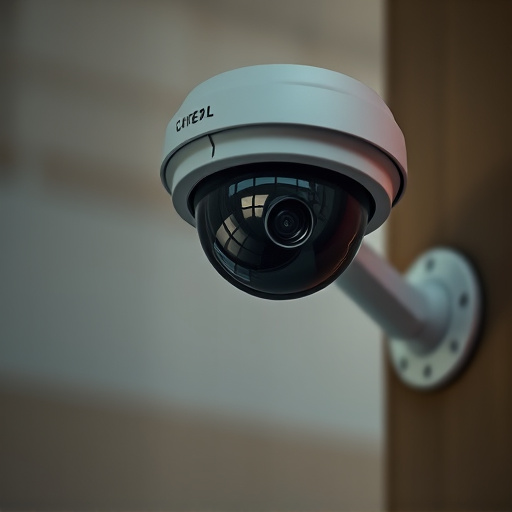Fake CCTV cameras are powerful deterrents for theft prevention, misleading potential thieves by simulating enhanced security. Strategically placed, they create a psychological barrier, tricking offenders into believing they're constantly monitored, significantly reducing crime rates in high-theft areas. Their effectiveness lies in combining deception with reality, making criminals cautious and less likely to engage in unauthorized activities, ultimately enhancing security for businesses and patrons.
Convincing decoy cameras have emerged as powerful tools in the fight against theft. This article delves into the multifaceted role of these fake CCTV cameras in deterring criminal activity, exploring their psychological impact, various types, and optimal placement strategies for maximum effectiveness. We also showcase real-world success stories through case studies, highlighting the deterrent effectiveness of well-placed decoy cameras. By understanding how these devices manipulate perceptions of surveillance, businesses can significantly reduce theft risks.
- Understanding the Role of Decoy Cameras in Theft Prevention
- The Psychology Behind Their Effectiveness as Deterrents
- Types and Placement Strategies for Optimal Results
- Real-World Success Stories: Case Studies in Theft Reduction
Understanding the Role of Decoy Cameras in Theft Prevention
Decoy cameras, often referred to as fake CCTV cameras, play a crucial role in theft prevention by acting as powerful visual deterrents. Their primary function is to mislead potential thieves and vandals, creating the perception of enhanced security where none may exist. This strategic deception can significantly reduce crime rates, especially in areas known for high theft or vandalism activities.
The effectiveness of these decoy cameras lies in their ability to trick offenders into believing they are under constant surveillance. When properly placed, these fake devices can deter criminals from targeting a particular area, as they may fear being caught on camera. This simple yet powerful tactic has been proven to be an affordable and efficient solution for businesses, retailers, and property owners looking to safeguard their assets and prevent theft.
The Psychology Behind Their Effectiveness as Deterrents
The mere presence of fake CCTV cameras, or decoy cameras designed to look like real surveillance equipment, can significantly impact potential thieves’ behavior. This psychological effect is rooted in the idea of uncertainty and the fear of being caught. Criminals often operate under the assumption that they won’t be discovered, but introducing visible deterrents challenges this mindset. The fake camera creates an ambiguous situation where it’s unclear if it’s active or not, leading to a potential thief’s hesitation and increased awareness of their surroundings, making them less likely to attempt a theft.
This strategy exploits the human tendency to avoid loss and seek certainty. By presenting a realistic yet illusory security system, businesses and properties can deter criminal activity without actually deploying costly and visible real cameras. The effectiveness lies in the balance between deception and reality, ensuring that would-be thieves think twice before attempting any unauthorized entry or theft.
Types and Placement Strategies for Optimal Results
Decoy cameras, also known as fake CCTV cameras, come in various types designed to mimic real surveillance equipment. Among the most common are static decoys with LED lights and motion-activated models that trigger when potential thieves approach. Their strategic placement is key to maximizing their deterrent effect.
For optimal results, place these cameras in areas easily visible from the street or entry points, such as front doors, windows, or gates. Avoid hiding them, as their effectiveness as deterrents relies on appearing as genuine security measures. Mounting them at eye level and above is ideal, as it discourages theft attempts while providing a clear view for real surveillance cameras hidden nearby.
Real-World Success Stories: Case Studies in Theft Reduction
In many real-world scenarios, decoy cameras have proven to be an effective deterrent against theft. Case studies in retail stores and business districts show significant reductions in shoplifting incidents since implementing fake CCTV cameras. For instance, a small boutique in a bustling city center reported a 30% decrease in theft after installing realistic-looking but inactive decoys. Similarly, a large shopping mall noticed a 25% drop in property offenses in areas where dummy cameras were strategically placed.
These success stories highlight the psychological impact of fake CCTV cameras. Criminals, aware that their actions are being watched, are less likely to attempt theft. The deterrent effect is amplified by the fact that these decoys blend seamlessly into the environment, making it hard for perpetrators to distinguish between real and dummy surveillance equipment. This strategy has not only led to tangible reductions in theft but also fostered a sense of security among business owners and patrons alike.
Decoy cameras, strategically placed, offer a powerful deterrent against theft. By emulating real security measures, these fake CCTV cameras exploit the psychological fear of being watched, significantly reducing criminal activity. Their effectiveness is supported by both theoretical understanding and practical case studies, making them a valuable tool for businesses and property owners seeking to safeguard their assets. Incorporating decoy cameras into a comprehensive security strategy can provide an extra layer of protection, ensuring peace of mind in today’s world.
